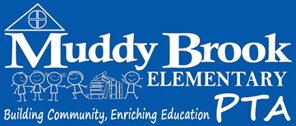The Intersection of Creativity and Technology in Education
Creativity is the spark that ignites innovation and fuels success. In the continuously evolving realm of education, technology serves as a catalyst for transformation, unlocking uncharted territories of creative expression for students. Join us as we delve into the dynamic convergence of creativity and technology, where these elements synergize, propelling us toward a future filled with limitless possibilities.
Creativity Enhanced by Technology
Creativity transcends mere buzzword status; it stands as a vital skill essential for problem-solving and navigating the intricacies of the real world. Within today's educational landscape, technology emerges as a formidable ally, actively fostering and amplifying creative prowess. It goes beyond traditional learning methods, encouraging students to explore, experiment, and express themselves in innovative ways.
Imagine a classroom where traditional boundaries dissolve, replaced by a digital canvas where ideas flourish. In this space, technology takes on the role of a facilitator, offering students tools and platforms to unleash their creativity. Whether it involves crafting a virtual world, producing digital art, or composing music through cutting-edge software, technology enriches the creative process, rendering it more engaging and accessible.
Interactive and Collaborative Learning
In the dynamic landscape of interactive and collaborative learning, technology plays a pivotal role in shaping educational experiences. One notable solution in this realm is Edulegit.com, a classroom computer monitoring software designed for assignment evaluation. This innovative tool exemplifies the changing dynamics of student engagement.
As we explore gamification, interactive learning, and collaborative projects, Edulegit.com becomes an invaluable asset in fostering an environment of academic integrity. Dedicated to improving the quality of education, it aims to cooperate with teachers in the fight against plagiarism and cheating. Through its advanced monitoring capabilities, this software ensures a fair and transparent assessment process, aligning perfectly with the goals of promoting creativity while upholding academic standards. The integration of such technologies not only safeguards the educational process but also nurtures a culture of trust and authenticity among students.
Digital Arts, Multimedia, and Coding
In the realm of creativity and technology, the integration of digital arts and multimedia reshapes the canvas of student expression. From graphic design to video production and music composition, students leverage digital tools to bring their ideas to life. The marriage of technology and creativity results in projects that transcend traditional boundaries, allowing students to communicate and connect in ways previously unimaginable.
Coding emerges as a potent force, not just for aspiring programmers but for all students seeking to unlock their creative potential. The logic and problem-solving skills inherent in coding spill over into other areas of education. As students write lines of code, they are, in essence, crafting a narrative, telling a story that unfolds in the digital realm. Coding becomes a language of creativity, empowering students to build, design, and innovate.
Success Stories and Real-life Examples
The impact of technology-infused creative education is not theoretical; it's tangible and transformative. Consider Sarah, a high school student who, through an interactive coding project, developed a mobile app that addressed a local community issue. Her success story is not unique; across the globe, students are showcasing their creativity through technology-driven initiatives.
Within a particular school district, a multimedia arts program empowered students to curate a virtual art exhibition, surpassing the physical confines of a traditional gallery. These instances of success serve as a testament to the symbiotic relationship between creativity and technology, affirming that with the right tools, students possess boundless potential.
Challenges, Ethics, and Future Trends
However, this intersection is not without its challenges. Integrating technology into education requires careful navigation to address issues of accessibility, privacy, and digital equity. As we embrace the benefits, we must also consider the ethical implications of technology use in education, ensuring a fair and inclusive learning environment for all.
Looking ahead, the future holds exciting prospects. The educational landscape is on the brink of incorporating virtual reality, artificial intelligence, and augmented reality as essential elements. These upcoming trends envision a setting where creativity is not merely nurtured but also heightened through the integration of cutting-edge technologies.
In this ongoing journey of evolution, it is crucial to navigate the convergence of creativity and technology with a balanced perspective, tackling challenges and upholding ethical standards. As we find ourselves at the threshold of a new era in education, students possess the opportunity to shape and redefine their learning experiences.
Embrace the Creative Potential
To conclude, the fusion of creativity and technology in education opens the door to a future where students transcend the role of mere learners to become creators. It represents a domain where the limits of imagination are stretched, unveiling boundless possibilities. As students, embrace the creative potential that technology offers—explore, experiment, and express. The journey is yours to shape, and the future is waiting to be created.
